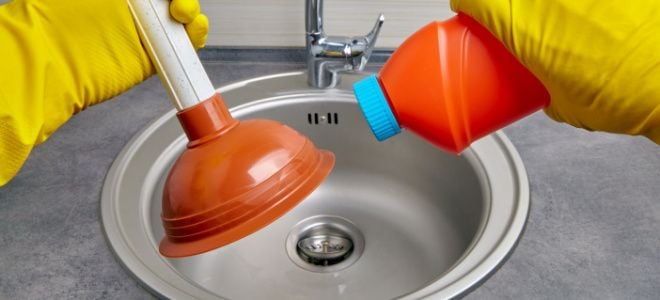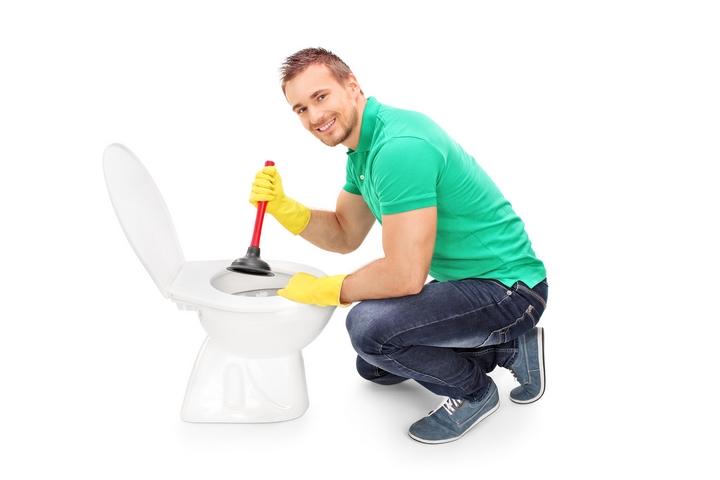Learn Plunger and Drain Cleaners Strategies: Professional Guidance
Learn Plunger and Drain Cleaners Strategies: Professional Guidance
Blog Article
We've stumbled on the article involving Tips on How to Effectively Use a Plunger down the page on the internet and believe it made perfect sense to share it with you in this article.

Introduction
Appropriate maintenance of family drains is essential for avoiding clogs and making certain smooth water flow. One of the secret tools in every house owner's toolkit is the plunger, along with various drain cleaners made to tackle stubborn blockages successfully. This write-up discovers how to use bettors and drainpipe cleansers effectively to maintain your drains pipes moving openly.
Area 1: Comprehending Plungers
Kinds of Plungers
There are several types of bettors readily available, each created for different types of drains pipes and blocks. The most usual kinds include mug plungers, flange plungers, and accordion bettors.
How Plungers Job
Bettors work with the principle of creating pressure and suction to remove blockages. When appropriately used over a drainpipe, they develop a vacuum cleaner that can take out particles or separate obstructions.
Selecting the Right Bettor
Choosing the best plunger depends on the type of drainpipe and the nature of the obstruction. Mug bettors are perfect for sinks and bathtubs, while flange plungers are much better matched for commodes as a result of their style.
Typical Mistakes with Plungers
Staying clear of these errors ensures efficient plunging: incorrect seal around the drainpipe, not enough force, and not clearing surrounding debris.
Area 2: Using Plungers Efficiently
Preparation
Before diving, make certain the plunger covers the drain entirely and creates a limited seal. Clear any noticeable debris around the drainpipe opening.
Strategy
Begin with mild plunging activities to construct suction. Increase stress gradually, using a steady rhythm. Repeat as necessary till the drainpipe gets rid of.
Troubleshooting Tips
If diving doesn't function, try adjusting the seal, using petroleum jelly for a better seal, or utilizing a various kind of bettor.
Section 3: Recognizing Drain Cleansers
Sorts Of Drain Cleansers
Drain pipes cleansers can be chemical or enzymatic. Chemical cleaners make use of solid chemicals to dissolve blockages, while chemical cleansers use natural enzymes to break down organic matter.
Exactly How Drainpipe Cleaning Company Work
Chemical cleaners react with blockages to dissolve them, while enzymatic cleaners break down organic materials like hair and grease without harming pipes.
Safety Considerations
Always wear handwear covers and eye defense when making use of chemical drainpipe cleaners. Guarantee sufficient ventilation and follow manufacturer guidelines meticulously.
Eco-Friendly Alternatives
Take into consideration utilizing vinegar and baking soft drink or enzyme-based cleaners for environmentally friendly options that are much safer for pipes and the setting.
Section 4: Making Use Of Drain Cleaning Company Efficiently
Application Methods
Put chemical cleaners directly right into the drainpipe opening. Enable them to work for the recommended time prior to flushing with hot water. Enzymatic cleaners need to rest overnight.
Precautions
Avoid blending various sorts of cleaners, as this can generate poisonous fumes. Never ever use chemical cleansers together with a plunger, as spilling can occur.
Handling Persistent Obstructions
For consistent clogs, take into consideration making use of a pipes serpent or calling an expert plumbing technician to avoid damage to pipes.
Conclusion
In conclusion, recognizing just how to utilize plungers and drainpipe cleaners successfully is vital for maintaining healthy and balanced pipes systems. By selecting the right tools and strategies, property owners can tackle small clogs and prevent significant plumbing problems down the line.
How To Properly Use A Plumbing Snake To Clear Drains
When any drain clogs in our home arise, we tend to gravitate toward the plunger and little else. In cases where the plunger and its vacuum-created pressure are not able to clear clogs, many immediately move to harmful chemicals or simply call their plumber to fix the issue.
we’re happy to help with all drain cleaning needs and concerns. This includes informing you on a few other home remedies you may have at your disposal for minor to moderate clogs, one of which is the use of a plumbing snake. Many people have never used one of these before – let’s go over the steps to take when your drain clogs and you have a plumbing snake available.
Attempt Plunger Use
The first step here, as we noted above, should indeed be to grab your plunger when you notice a drain clog and attempt to resolve it this way. If you’re unsure how to use a particular type of plunger, our plumbers can answer any questions you have. If this doesn’t do the trick, however, you move on to the snake.
Locate And Prepare Snake
A plumbing snake is a metal or plastic device that’s generally about a quarter of an inch thick. It’s design with significant extensions, meant to reach down into your clogged drain and push the clog out. Snakes also contain drain augers that will latch onto and push stubborn blockages.
If your plunger doesn’t clear a clog, locate your snake and bring it to the drain in question. We also recommend keeping a bucket nearby to collect the clog once you pull it out, plus we’d advise wearing goggles and possibly protective gloves.
Feed Snake
Once you’re ready to go, feed the snake slowly down the drain, using the crank device it comes with to keep it moving until it finds the clog. Once this happens, much of the clog will be latched onto the coil so you can pull it out, while the rest will simply break up and flow downward.
Detach Debris
Remove the snake slowly from the drain, and once you’ve done so, pick off any debris that’s stuck to the coil. This is another area where wearing gloves is a must.
Flush Drain
Finally, take a few minutes to ensure the snake has done its job correctly. If you’ve been using it on a toilet, flush the toilet a couple times and make sure everything flows well. If you’ve used it on a different drain, flush it with some room temperature water.
https://www.mybuddytheplumber.com/blog/how-to-properly-use-a-plumbing-snake-to-clear-drains/

Application Methods
Put chemical cleaners directly right into the drainpipe opening. Enable them to work for the recommended time prior to flushing with hot water. Enzymatic cleaners need to rest overnight.
Precautions
Avoid blending various sorts of cleaners, as this can generate poisonous fumes. Never ever use chemical cleansers together with a plunger, as spilling can occur.
Handling Persistent Obstructions
For consistent clogs, take into consideration making use of a pipes serpent or calling an expert plumbing technician to avoid damage to pipes.
Conclusion
In conclusion, recognizing just how to utilize plungers and drainpipe cleaners successfully is vital for maintaining healthy and balanced pipes systems. By selecting the right tools and strategies, property owners can tackle small clogs and prevent significant plumbing problems down the line.
How To Properly Use A Plumbing Snake To Clear Drains
When any drain clogs in our home arise, we tend to gravitate toward the plunger and little else. In cases where the plunger and its vacuum-created pressure are not able to clear clogs, many immediately move to harmful chemicals or simply call their plumber to fix the issue.
we’re happy to help with all drain cleaning needs and concerns. This includes informing you on a few other home remedies you may have at your disposal for minor to moderate clogs, one of which is the use of a plumbing snake. Many people have never used one of these before – let’s go over the steps to take when your drain clogs and you have a plumbing snake available.
Attempt Plunger Use
The first step here, as we noted above, should indeed be to grab your plunger when you notice a drain clog and attempt to resolve it this way. If you’re unsure how to use a particular type of plunger, our plumbers can answer any questions you have. If this doesn’t do the trick, however, you move on to the snake.
Locate And Prepare Snake
A plumbing snake is a metal or plastic device that’s generally about a quarter of an inch thick. It’s design with significant extensions, meant to reach down into your clogged drain and push the clog out. Snakes also contain drain augers that will latch onto and push stubborn blockages.
If your plunger doesn’t clear a clog, locate your snake and bring it to the drain in question. We also recommend keeping a bucket nearby to collect the clog once you pull it out, plus we’d advise wearing goggles and possibly protective gloves.
Feed Snake
Once you’re ready to go, feed the snake slowly down the drain, using the crank device it comes with to keep it moving until it finds the clog. Once this happens, much of the clog will be latched onto the coil so you can pull it out, while the rest will simply break up and flow downward.
Detach Debris
Remove the snake slowly from the drain, and once you’ve done so, pick off any debris that’s stuck to the coil. This is another area where wearing gloves is a must.
Flush Drain
Finally, take a few minutes to ensure the snake has done its job correctly. If you’ve been using it on a toilet, flush the toilet a couple times and make sure everything flows well. If you’ve used it on a different drain, flush it with some room temperature water.
https://www.mybuddytheplumber.com/blog/how-to-properly-use-a-plumbing-snake-to-clear-drains/

Do you appreciate reading about A Guide to Plungers (and How to Use Them)? Put a review directly below. We would be happy to know your feelings about this post. We hope that you come back again in the near future. Appreciated our review? Please share it. Help other people find it. Thank you so much for taking the time to read it.
Estimate Free Report this page